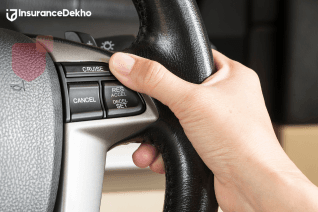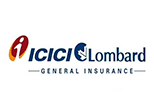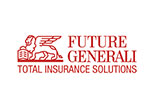PPF vs Ceramic Coating: Which Offers Better Protection for Your Car?
Car owners constantly look for ways to protect their vehicles from scratches, environmental damage, and UV rays. Paint Protection Film (PPF) and ceramic coating are two popular choices. Both provide significant benefits, but the best option for you depends on your priorities, whether it’s cost, protection level, durability, or ease of maintenance.
In this guide, we’ll compare PPF and ceramic coating, explore their advantages and disadvantages, and help you decide which one suits your needs.
Key Highlights
-
PPF offers superior protection against scratches and chips.
-
Ceramic coating enhances gloss, water resistance, and UV protection.
-
PPF lasts 5-10 years; ceramic coating lasts 2-5 years.
-
PPF is best for long-term durability; ceramic coating is more cost-effective.
What is Paint Protection Film (PPF)?
PPF is a thin, transparent polyurethane film applied to your car’s exterior to protect it from scratches, stone chips, and environmental damage. Originally developed for military use, PPF is now widely used in the automotive industry.
Benefits of PPF:
-
Scratch Resistance: PPF absorbs small scratches and stone chips, preventing damage to your car’s paint.
-
Self-Healing: High-quality PPF can self-heal minor scratches when exposed to heat (like sunlight or warm water).
-
UV Protection: PPF prevents paint from fading due to sun exposure.
-
Chemical Resistance: It protects the car from road salt, tree sap, bird droppings, and other chemicals.
-
Long-lasting: PPF can last 5 to 10 years, providing strong protection for the long term.
Drawbacks of PPF:
-
Cost: PPF, especially for full-body coverage, can be expensive, ranging from ₹50,000 to ₹1,50,000 depending on the vehicle.
-
Installation: PPF requires professional installation to avoid visible edges or bubbles.
What is Ceramic Coating?
Ceramic coating is a liquid polymer applied to your car’s paint, creating a protective, hydrophobic layer. This coating enhances the paint’s resistance to chemicals, dirt, and UV rays, making it easier to maintain and adding a glossy finish.
Benefits of Ceramic Coating:
-
High Gloss Finish: It gives your car a showroom-like shine, making the paint appear more vibrant.
-
Water and Dirt Repellent: Ceramic coating makes water, dust, and mud slide off the surface, reducing the need for frequent cleaning.
-
UV Protection: It protects the paint from sun damage and oxidation, helping prevent fading.
-
Chemical Resistance: The coating withstands road salts, bird droppings, and acid rain.
-
Ease of Maintenance: Since it repels water and dirt, your car stays cleaner for longer.
Drawbacks of Ceramic Coating:
-
No Physical Protection: While it enhances resistance to contaminants, it doesn't protect against physical damage like scratches or stone chips.
-
Complex Application: Ceramic coatings require professional application for the best results, and improper application can affect the performance.
-
Reapplication: Over time (usually 2-5 years), it may require reapplication, depending on environmental conditions.
PPF vs. Ceramic Coating: A Side-by-Side Comparison
Protection Level:
-
PPF: Provides the highest level of physical protection by absorbing scratches, stone chips, and abrasions. It’s the best option for protecting your car from direct impacts.
-
Ceramic Coating: Great for chemical resistance, water resistance, and UV protection, but it won’t stop scratches or rock chips.
Aesthetic Impact:
-
PPF: Mostly transparent, but edges can be visible if not applied professionally. It doesn't alter the appearance of your car’s paint.
-
Ceramic Coating: Adds a glossy, rich finish, enhancing the color and depth of your car’s paint.
Durability and Maintenance:
-
PPF: Lasts between 5 and 10 years, making it a long-term solution. However, it requires careful maintenance to avoid peeling or discoloration.
-
Ceramic Coating: Typically lasts 2 to 5 years, depending on usage and environmental exposure. It’s easier to maintain because it repels water and dirt, reducing the need for frequent washing.
Cost:
-
PPF: The more expensive option, especially for full-body coverage, costing anywhere between ₹50,000 and ₹1,50,000.
-
Ceramic Coating: More affordable, typically ranging from ₹15,000 to ₹50,000.
What to Consider as an Indian Car Owner?
Driving Conditions:
-
PPF: Ideal for drivers who frequently travel on highways or uneven roads where stone chips and scratches are more common.
-
Ceramic Coating: Perfect for city driving, providing protection against dust, smog, and minor impurities.
Climate Considerations:
-
Ceramic Coating: Works well in hot, sunny climates to prevent paint fading. It also keeps the car cleaner in rainy regions by preventing dirt buildup.
-
PPF: Offers superior protection in harsh climates by guarding against abrasions and physical damage.
Budget:
-
PPF: Ideal for those with a larger budget looking for long-term, physical protection.
-
Ceramic Coating: A more budget-friendly option, perfect if you want good protection without a hefty price tag.
Combining PPF and Ceramic Coating for Maximum Protection
For the best of both worlds, many car owners choose to combine PPF with ceramic coating. Here’s how:
-
Apply PPF to high-impact areas like the front bumper, hood, and mirrors for superior scratch and chip protection.
-
Apply ceramic coating over the entire car, including the PPF, for added gloss, water resistance, and UV protection.
When choosing between PPF and ceramic coating, consider what matters most to you. If you're looking for maximum protection against physical damage like scratches and chips, PPF is the way to go. If you're more focused on a glossy finish, ease of maintenance, and protection against chemical and UV damage, ceramic coating is your best bet. For the ultimate solution, combining both provides the best protection and appearance














































